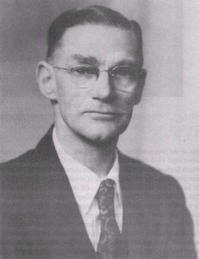


Memories of the Bureau, 1946 to 1962
Foreword
Terminology
Prologue
Preface
Chapter 1: The Warren Years, 1946 to 1950
Chapter 2: International Meteorology
Chapter 3: The Timcke Years, 1950 to 1955
A Period of Consolidation
Aviation Services
Services for the General Public
Rockets and Atomic Weapons
Instruments and Observations
Climate and Statistics
International Activities
Training
Publications
Research
Central Analysis and Development
CSIRO
The Universities
The Meteorology Act
Achievements of the Timcke Years
Chapter 4: A Year at the Massachusetts Institute of Technology
Chapter 5: The Dwyer Years, 1955 to 1962
Chapter 6: A Springboard for the Future
Appendix 1: References
Appendix 2: Reports, Papers, Manuscripts
Appendix 3: Milestones
Appendix 4: Acknowledgements
Appendix 5: Summary by H. N. Warren of the Operation of the Meteorological Section of Allied Air Headquarters, Brisbane, 1942–45
Endnotes
Index
Search
Help
Contact us

A Period of Consolidation
The Timcke years were a period of consolidation. Warren had generated a lively atmosphere of excitement and promise of a rosy future for the Bureau. Warren had reorganised the Bureau's administration and had recruited the necessary staff. Timcke's task was to maintain the momentum and implement Warren's plans.
Luckily, the post-war staff had the dedication, imagination and initiative to assist Timcke. Those in the Central Office included Len Dwyer and Tom Hall in administration and management, Walter Dwyer and Ralph Holmes in aviation and telecommunications, Bill Brann in instruments and observations, Harry Ashton in training and publications, and a strong team working on research, central analysis and special investigations. All of these areas had experienced staff, some with long experience in the Bureau, some newly recruited when the RAAF Meteorological Service was formed and a special group of bright younger men who had joined towards, or just after, the end of the war.
Tim was fortunate that those in charge of the Divisional Offices were highly experienced meteorologists. The two John Hogans were Deputy Directors, John Hogan (1896–1970) in Sydney, and 'Doc' Hogan (1912–1978) in Adelaide.
Tommy Camm was Deputy Director, Melbourne, and was succeeded by John Lillywhite when Tommy retired in 1953. George Mackey was Deputy Director, Perth. Stan Richards, Deputy Director, Brisbane, was replaced after his retirement by Barney Newman. Arch Shields became Deputy Director, Hobart, when Vic Bahr left that position to join the WMO Secretariat in Geneva.
All Deputy Directors had experienced, hard working meteorologists on their staffs who contributed new ideas for the provision of services to the general public and to special users. The Bureau's field offices had a blend of meteorologists, weather officers and observers working in small groups at about 40 locations in Australia. Like the staffs of the Divisional Offices they had direct and individual responsibility for the making of observations and the provision of meteorological services.
People in Bright Sparcs - Ashton, Henry Tamblyn (Harry); Bahr, Victor John; Brann, Harold Walter Allen Neale (Bill); Dwyer, Leonard Joseph; Dwyer, Walter Anthony; Hall, Thomas Taylor (Tom); Hogan, John; Hogan, John (Doc); Holmes, Ralph Aubrey Edward; Lillywhite, John Wilson; Mackey, George William; Newman, Bernard William (Bernie); Richards, Alfred Stanley (Stan); Shields, Archibald John; Timcke, Edward Waldemar; Warren, Herbert Norman
 |
Bureau of Meteorology |  |
© Online Edition Australian Science and Technology Heritage Centre and Bureau of Meteorology 2001
Published by Australian Science and Technology Heritage Centre, using the Web Academic Resource Publisher
http://www.austehc.unimelb.edu.au/fam/0965.html